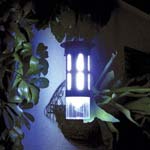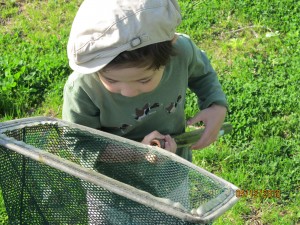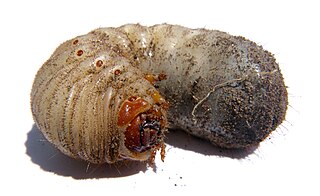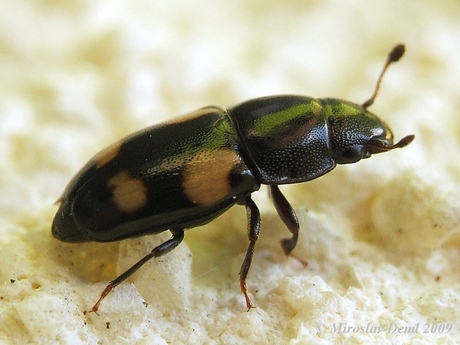 Although it’s below freezing here in NY, my thoughts are straying to a favorite warm-weather activity – collecting insects for my herp collection. Invariably, I find species that are new to me, and others that I wind up keeping alive in small terrariums. Drawing on a lifetime of collecting for my pets and the animals under my care at the Bronx Zoo, I’ve written articles on capturing, using, and breeding many invertebrates, including sap beetles, leaf litter dwellers, “meadow plankton”, earwigs, sow bugs, grasshoppers, and many others. In this article, I’ll summarize my favorite collection techniques and traps. Links to articles containing further information are also included. As I and other herp-keepers have barely scratched the surface of this topic, please be sure to post your own thoughts and experiences below.
Although it’s below freezing here in NY, my thoughts are straying to a favorite warm-weather activity – collecting insects for my herp collection. Invariably, I find species that are new to me, and others that I wind up keeping alive in small terrariums. Drawing on a lifetime of collecting for my pets and the animals under my care at the Bronx Zoo, I’ve written articles on capturing, using, and breeding many invertebrates, including sap beetles, leaf litter dwellers, “meadow plankton”, earwigs, sow bugs, grasshoppers, and many others. In this article, I’ll summarize my favorite collection techniques and traps. Links to articles containing further information are also included. As I and other herp-keepers have barely scratched the surface of this topic, please be sure to post your own thoughts and experiences below.
The Best Method, Bar None
The best collecting tip I can provide is that you team up with a small child. As you can see from my photos, their enthusiasm cannot be out into words, and it is contagious. What’s more, a child’s curiosity, size and sharp eyesight will increase your catch – and your enjoyment of the experience – immensely. My little collecting partner has found invertebrates that I’ve never seen before, even in areas I’ve explored for decades!
 The Zoo Med Bug Napper Insect Trap
The Zoo Med Bug Napper Insect Trap
The Zoo Med Bug Napper is a scaled-down version of the traps I used to collect food for the Bronx Zoo’s reptiles, amphibians, and birds. It is very effective at snaring moths, beetles, midges, and other flying insects. Along with field sweeping (see below), this trap has the potential to yield the greatest numbers and varieties of insects. Checking it each morning is a thrilling experience, and finding a species new to you – or even to science – is a real possibility.
This term is used by entomologists to describe the astonishing variety of invertebrates that can be collected by simply sweeping a net through tall grass. The accompanying photo was taken after collecting in a tiny, overgrown field in the middle of a busy park. Twenty minutes of “work” yielded 30-40 species, including spiders, leafhoppers, aphids, grasshoppers, mantids, bee flies, caterpillars and many others…and my nephew later spent hours poring over his books trying to identify our prizes.
Leaf Litter Invertebrates
A single acre of fallen leaves can be home to 3 tons (yes, tons!) of springtails, ants, beetles, spiders, millipedes and other invertebrates. Many are tiny, and readily accepted by Poison Frogs and other small herps that must generally make do with only 2-3 food items.
To sample what’s out there, simply place a handful of leaf litter into a funnel, suspend the funnel over a jar and position a 100 watt bulb about 6 inches above the leaves. Creatures seeking to escape the heat will move down the funnel and into the jar. A damp paper towel placed at the bottom of the collecting jar will assure they survive until removed. More information.
Termites feature heavily in the diets of animals ranging from tiny toads to huge monitor lizards. To make a termite trap, simply take a small plastic storage box and cut several holes of 2-3 inches in diameter into the 4 sides. Stuff the box with damp cardboard (a termite delicacy, it seems) and you’re all set. Search for termite nests beneath rotting logs, and place your trap about a foot away, buried so that the top of the box is flush with the surface. The termites will establish feeding tunnels to the box, and can be removed as needed (leave the box in place so as not to disturb the tunnels). More information.
Pitfall Traps
A bewildering assortment of creatures will stumble into a jar or can buried flush with the ground, but you can increase your catch by adding bait. A bit of ripe fruit, molasses, honey and some tropical fish flakes will lure beetles, snails, sow bugs and other invertebrates. Be sure to keep some dead leaves in the trap to provide hiding places, and cover the opening with a board that is slightly elevated by small stones, to keep out rain. More information.
Bush Beating
This simple yet effective collecting technique was developed by entomologists. To collect insects in this manner, place a white, un-patterned sheet below a bush or tree, and beat the foliage with a stick. That’s it!
For me, the biggest drawback to bush beating is the distraction factor – I just can’t resist closely checking the incredible assortment of caterpillars, beetles, ants, tree crickets, katydids, spiders and other tasty morsels that rain down. Your catch will consist largely of arboreal species, which are especially-relished by tree frogs, flying and day geckos, smooth green snakes and other tree-dwelling herps. More information.
Random Searching
By keeping a jar and net in my yard and near outdoor lights, I can easily add variety to my pets’ diets by collecting as time permits. I also turn over rocks, look among flowers and weeds, scatter cover boards about, smear honey on trees and try anything else that comes to mind – some invertebrate will show up.
To explore other possibilities, please see my articles on collecting sap beetles, earwigs, sow bugs, grasshoppers, houseflies, mantis egg cases, cicadas and aquatic isopods.
Cautions
Be careful when examining your catch, as potentially dangerous (to you and your pets) spiders, scorpions, hornets and other such creatures may be present. Have a good field guide on hand if you are unfamiliar with local species, and use feeding tongs to handle animals if in doubt.
Do not use fireflies, “hairy” caterpillars, or any brightly-colored insects that you cannot identify. Unless you are well-acquainted with local spiders, it is best to avoid them as well…harvestmen, or “daddy long-legs”, however, are harmless (and judging by my pets’ reactions, quite tasty!).
Please also see the articles linked below for information concerning possible pesticides and parasites.
Further Reading
Collecting Insects for Reptile Food: Pesticide Concerns
Wild Caught Insects as Herp Food: Dangerous Species
 That Reptile Blog – Reptile, Amphibian and Exotic Pet Care and Information
That Reptile Blog – Reptile, Amphibian and Exotic Pet Care and Information






